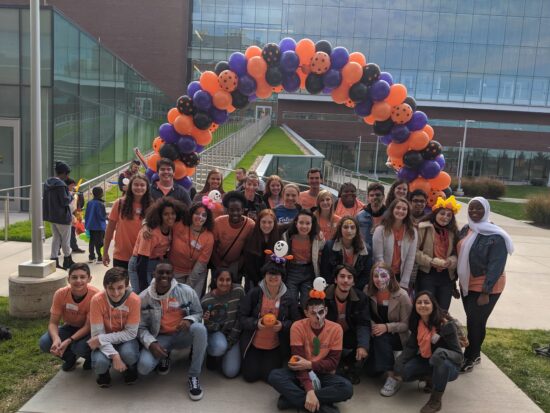By Sarah Martin, Special Program Manager, Global Ties KC
As I heard that schools were beginning to close, my first concern was for our Youth Diplomats program. With only eight meetings a year, we rely on our moments together to provide valuable insight into the world of public affairs and diplomacy. Now that this time was taken away from us, we had to think creatively about how to continue providing meaningful experiences.

Prior to lockdown, Kansas City Youth Diplomats participated in a joint community service project with students from France. Credit: Global Ties KC
We began constructing content for a virtual classroom to keep students engaged and connected. Beginning the process, we prioritized hearing student voices and opinions. Using Google Surveys allowed us to collect this information easily, which laid the foundation for our curriculum. We asked students about three key things: 1. Technological capabilities and challenges, 2. Times and days they are available virtually, and 3. What they are interested in participating in from home. That was instrumental in framing the context of how programming would look for the rest of the school year.
Once we had gathered all relevant information from our students, we moved into constructing the actual virtual programs. To that end, we had to learn as we went along. Some activities were more successful than others: Virtual Jeopardy? Worked. Unfacilitated breakout room questions? Not so much.
One of the most valuable lessons learned is that virtual events do not demand perfection. It is okay if there are awkward moments or if things do not go as planned. Even better, use it as a teaching point; there is value in demonstrating to our students the skills of troubleshooting, being flexible, and maintaining emotional control when things do not go as planned.
We still have our struggles with virtual programming, but we are seeking ways to overcome these obstacles. One of the largest challenges has been attendance. We have been trying to navigate that obstacle by establishing attendance requirements for program completion and providing leadership opportunities. If students feel like their involvement is valued, then they are more likely to fully participate.
Although we are by no means experts and we continue to learn every day, the transition has been easier than we ever imagined. If your organization is looking at ways to engage youth in your community, virtually may be a great starting point.
I think one of the benefits of the past few months is proving that the world of exchange can be adaptable to a multitude of interactions. Whether it is international neighbors or virtual strangers, humans thrive when allowed to share common experiences.
